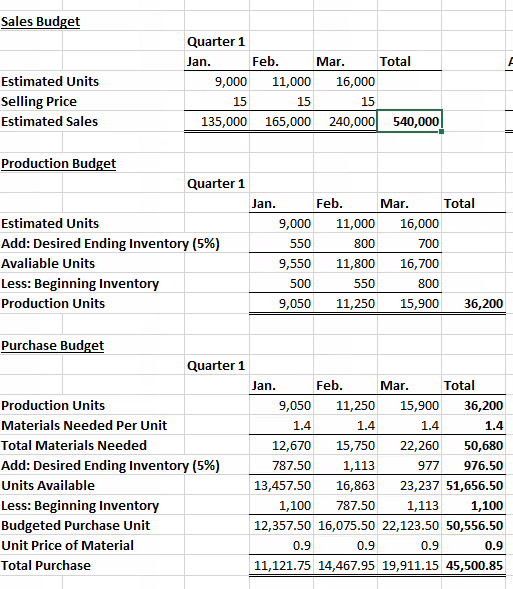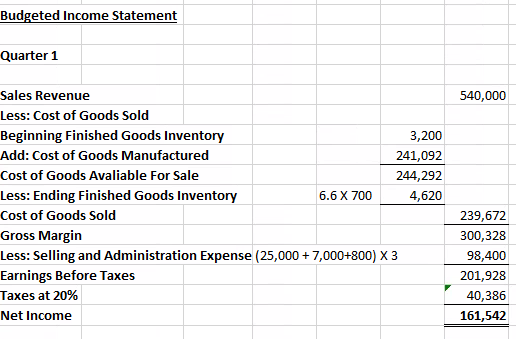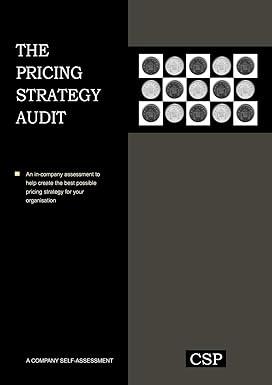Question
You have been hired by the McClosky Corporation and they manufacture industrial dye. The company is preparing its 20X9 master budget and has presented you
You have been hired by the McClosky Corporation and they manufacture industrial dye. The company is preparing its 20X9 master budget and has presented you with the following information:
- The projected December 31, 20X8, balance sheet for the company is as follows:
Assets
Cash $ 6,080
Accounts Receivable 29,500
Raw Materials Inventory 1,000
Finished Goods Inventory 3,200
Prepaid Insurance 1,800
Building $ 350,000
Accum Depreciation (25,000) 325,000
Total Assets $ 366,580
Liabilities and Equity
Notes Payable $ 25,000
Accounts Payable 2,650
Dividends Payable 12,000
Total Liabilities $ 39,650
Common Stock $ 200,000
Paid-In Capital 40,000
Retained Earnings 86,930 326,930
Total Liabilities and
Stockholders Equity $ 366,580
Other Information that is being provided to you:
- The Accounts Receivable balance at 12/31/20X8 represents the balances of November and December credit sales. Sales were $90,000 and $85,000 respectively.
- Estimated sales in gallons of dye for January through May 20X9 are as follows:
January 9,000
February 11,000
March 16,000
April 14,000
May 13,000
June 12,000
Each gallon of dye sells for $ 15
- The collection pattern for accounts receivable is as follows: 70 percent in the month of sale, 20 percent in the first month after the sale, and 10 percent in the second month after the sale. McClosky does not provide cash discounts and they are not expecting any bad debts.
- Each gallon of dye has the following standard quantities and costs for direct material and direct labor:
1.4 gallons of direct material (some evaporation takes place during processing) X $.90 per gallon $ 1.26
0.5 direct labor X $ 8 per hour 4.00
- Variable overhead is applied to the product on a machine-hour basis. Processing one gallon of dye takes five hours of machine time. The variable overhead is $0.08 per machine hour. Variable overhead consists of utility costs. Total annual fixed overhead is $150,000; it is applied at $ 1 per gallon based on expected annual capacity of 150,000 gallons. Fixed overhead per year is made up of the following costs:
Salaries $ 110,000
Utilities 15,000
Insurance 1,800
Depreciation-factory 23,200
Fixed overhead is incurred evenly throughout the year.
- There is no beginning Work-in-Process Inventory. All work is completed in the period in which it is started. Raw Material Inventory at the beginning of the year consists of 1,100 gallons of direct material at a standard cost of $.90 per gallon. There are 500 gallons of dye in Finished Goods Inventory at the beginning of the year carried at a standard cost of $6.28 per gallon; direct material, $.98, direct labor, $4.00; variable overhead $ .30; fixed overhead , $1,00
- Accounts Payable relates to raw material and is paid 60 percent in the month of purchase and 40 percent in the month after purchase. No discounts are received for prompt payment.
- The dividend will be paid in January 20X9.
- A new piece of equipment will be purchased in March 20X9 and the cost is $12,000. Payment of 80 percent will be made in March and 20 percent in April. The equipment has a useful life of three years and will be placed in service on March 1.
- The note payable has a 12 percent interest rate; interest is paid at the end of each month. The principle of the note is repaid as cash is available to do so.
- The McClosky management team wishes to maintain a minimum cash balance of $5,500. Investments and borrowing are made in $100 amounts. (Even $100 amounts). Interest on any borrowings are expected to be 12 percent per year, and investments will earn 4 percent per year.
- The ending finished goods inventory should include 5 percent of next months sales. This will not be true at the beginning of 20X9 due to a miscalculation in sales for the month of December. The ending inventory of raw materials should be 5 percent of next months needs.
- Selling and administration costs per month are as follows: salaries $25,000; rent, $7,000 and utilities, $800. These costs are paid in cash as they are incurred.
- The companys tax rate is 20 percent
Milestone 3:
- Budgeted Balance Sheet
- Cash Budget
- Budget Presentation and please address the following questions:
- The sales manager would like to increase the sales price by 10 next quarter, what will be the projected revenues be for the 2nd quarter.
- The production manager would like to purchase new equipment for next quarter due to the fact that their competitor has purchased equipment which cost $50,000. Will the company be able to make the purchase or will you need more information?
- The CEO feels that the cash budget is not necessary, please explain to the CEO why cash budgeting is important to the organization.
- Please explain the to the management team how a competitors actions can affect business planning.
Here are the statements to complete milestone 3



Step by Step Solution
There are 3 Steps involved in it
Step: 1

Get Instant Access to Expert-Tailored Solutions
See step-by-step solutions with expert insights and AI powered tools for academic success
Step: 2

Step: 3

Ace Your Homework with AI
Get the answers you need in no time with our AI-driven, step-by-step assistance
Get Started


